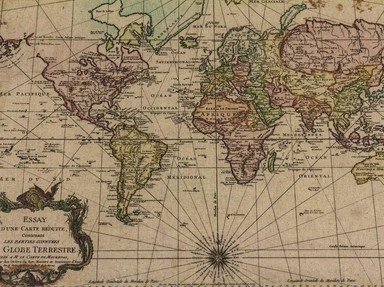Quiz Answer Key and Fun Facts
1. A Celtic tribe is believed to have founded this city on an island in the midst of a river in the latter part of the third century BC. In AD 508, a king named Clovis established the city as his capital and named it after the Celtic tribe. It is ideally situated to control trade on an important river. Its location is latitude 48.50 N, longitude 2.20 E. Of which nation is it the capital?
2. Believing they had subdued this land's Celtic tribes, the conquering Romans built the city that would become a provincial capital at a site ideal for trade. The Romans located their town on a river far enough inland to allow a bridge to be built across it, while still allowing easy access to the sea. The forces of a Celtic queen, Queen Boudica, destroyed the Roman settlement in AD 60, a mere ten years after it was built. The Romans rebuilt the city, which ultimately became the capital of the nation containing it. The city's location is latitude 51.36N, longitude 00.05W. It is the capital of which modern nation?
3. According to folklore, on April 21, 753 BC, twin brothers founded this city, locating it on the seven hills that lifted it above the surrounding (malarial?) swamps. Close to the Mediterranean, the location proved an ideal base for conquest. The city is located at latitude 41.54N, longitude 12.29E. Of which country is it the capital?
4. Settled as early as 5000 BC, this city's name probably means "foundation of peace". Located about 30 miles from the Mediterranean Sea, atop a limestone plateau 2500 feet above sea level, the steep ravines on three sides rendered the city immune to attack except from the north. Its mountainous terrain protected its Bronze Age people from the iron chariots of the more technologically advanced cities in the plain between the mountains and the sea. The king who conquered the city about 1000 BC made it the capital of his realm. The city's GPS coordinates are 31.47 N, 35.13 E. Of what nation is this city the capital?
5. An ancient people erected their "high city" upon an easily defensible, high, flat-topped hill. Appropriately, they named it after a deity who presided over both wisdom and warfare. Mountains surround the city on three sides; on the remaining side the city opens onto the Mediterranean Sea only five miles distant. Although defeated by another city-state in the fifth century BC, the city remained an intellectual and cultural center. It became its nation's capital in 1834. It is located at latitude 37.58 N, 23.46 E. Of which country is it the capital?
6. Ideally located for trade, this city was founded about 2000 BC. However, one of the region's most famous inhabitants lived nearby an estimated 500,000 years ago. The city is the terminus of the Grand Canal, which stretches for over 1000 miles and was built over 1000 years ago. The city's name means "northern capital", but the city once had a similar name that meant "northern peace". Its GPS coordinates are 39.55 N, 116.26 E. Of what nation is this city the capital?
7. In the ninth and tenth centuries AD, Celtic and Norwegian people settled in the area surrounding "Smoky Bay", so called because of the steamy mists that arose from nearby thermal springs. The city became its nation's capital when the country gained independence from a European power in 1944. Interestingly, this country has no armed forces. The city is located at latitude 64.10N, longitude 21.57W. Of what country is it the capital?
8. According to legend, Saint Andrew came to this remote area to preach, erected a cross on a hill, and predicted that some day a great city would arise here. In AD 482, according to this same legend, three brothers decided to found a city as they gazed at seven tree clad, wildflower strewn hills on the opposite side of a pristine, blue river. Each settled on one of the seven hills, and the city was named after one of the brothers. The steppes of this region were later home to the Cossacks. When the country gained its independence in 1991, this city became its capital. It is located at latitude 50.25 N, 30.3 E. Of which nation is this city the capital?
9. This city is believed to have been founded in the twelfth century AD as a village. Located on an estuary opening out onto a large bay, the city was also situated in one of the few level areas of this mountainous country. In the fifteenth century, a local ruler built a castle; and from 1603 to 1867 his descendants dominated the country, usurping the authority of the Emperor. Ironically, the city only became the capital in 1867 when the castle was surrendered to the Emperor. The GPS coordinates for this city are 35.40 N, 139.45 E. Of what country is it the capital?
10. This capital city is situated on a plateau over 7000 feet above sea level. A volcanic eruption destroyed the village that occupied the same location in 200 BC. In the fourteenth century AD, a city was constructed on an island in the middle of a lake. It became the capital of an empire that European invaders conquered in the sixteenth century. It is located at latitude 19.24 N, longitude 99.09 W. Of which nation is this city the capital?
Source: Author
uglybird
This quiz was reviewed by FunTrivia editor
LilahDeDah before going online.
Any errors found in FunTrivia content are routinely corrected through our feedback system.

